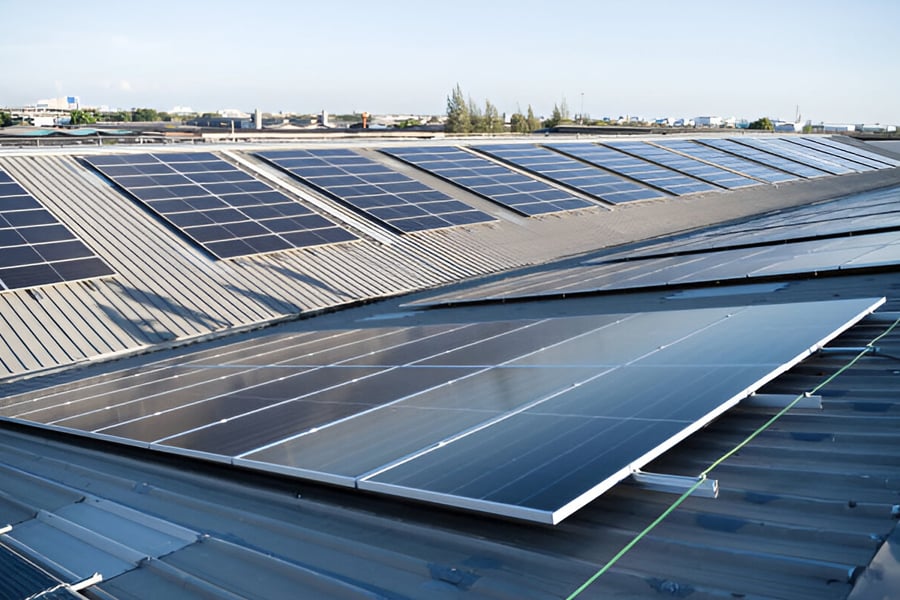Introduction
Solar power is a renewable source of energy that is increasingly becoming popular. It provides an environmentally friendly way to generate electricity, reduces energy bills, and extends battery life. However, to harness the full potential of solar power, you need to understand how to install a solar regulator wiring system. In this article, we'll explore ten different aspects of solar regulator wiring to help you get started.
1. What is a solar regulator?
A solar regulator is also known as a charge controller. Its main function is to regulate the charge of the batteries in a solar power system. The solar regulator prevents the batteries from overcharging, over-discharging, and overheating, which can lead to reduced battery life and system failure. The solar regulator ensures that the batteries are charged safely and efficiently, which is critical for the longevity and performance of the system.
2. Types of solar regulators
There are two main types of solar regulators, which are Pulse Width Modulation (PWM) and Maximum Power Point Tracking (MPPT). PWM regulators are simpler, cheaper, and ideal for small systems. They connect the solar panels to the battery and regulate the voltage output. MPPT regulators are more complex, expensive, and efficient. They adjust the solar panel voltage to match the battery voltage, allowing for maximum power transfer from the panels to the battery.
3. Benefits of solar regulators
Solar regulators provide several benefits, including:
- Extend battery life by preventing overcharging and over-discharging.
- Improve system efficiency by ensuring that batteries are charged optimally.
- Protect the system from damage due to voltage fluctuations.
- Reduce maintenance costs by preventing battery damage and replacement.
4. Wiring the solar regulator
The solar regulator should be wired correctly to ensure that it functions properly. The wiring should be done according to the manufacturer's instructions, which should include:
- Connecting the solar panel positive and negative leads to the regulator's solar panel input.
- Connecting the battery positive and negative leads to the regulator's battery output.
- Connecting any load or auxiliary inputs to the regulator's output.
- Using appropriately sized and rated wires and fuses to prevent overheating and damage.
5. Tools and equipment needed for wiring
Wiring a solar regulator requires some tools and equipment, which include:
- Screwdrivers and spanners
- Crimping tools and cable cutters
- Fuses and fuse holders
- Wires and terminals
- Multimeter and voltmeter
6. Precautions and safety measures
Solar regulator wiring involves working with electricity, which can be dangerous if not handled correctly. To avoid accidents and injuries, you should:
- Turn off the solar panels and disconnect the battery before starting.
- Wear appropriate protective gear and clothing, such as gloves and safety glasses.
- Follow the manufacturer's instructions and wiring diagram closely.
- Test the wiring and connections using a multimeter before connecting to the battery.
7. Troubleshooting
If your solar regulator is not working correctly, there may be several causes, including:
- Incorrect wiring or connections
- Overloaded circuits or fuses
- Low solar panel output or battery voltage
- Internal regulator faults or failures
8. Maintenance
Solar regulators require minimal maintenance, but some tasks are essential for their longevity and performance, which include:
- Cleaning the solar panels regularly to remove dust and debris.
- Checking the wiring and connections periodically for looseness or damage.
- Testing the battery voltage and output regularly using a multimeter.
- Replacing any faulty or damaged components promptly.
9. Upgrading your system
If you want to expand your solar power system or upgrade to a more efficient solar regulator, you can follow these steps:
- Determine your power needs and system requirements.
- Select a suitable solar regulator type and model based on your needs.
- Calculate the wiring and fusing requirements for the new regulator.
- Disconnect the old regulator and replace it with the new one.
- Test the system and adjust the settings as necessary.
10. Conclusion
Solar regulator wiring is a critical aspect of a solar power system. It ensures that the batteries are charged safely and efficiently, extends battery life, and reduces maintenance costs. By following the manufacturer's instructions and guidelines, using appropriate tools and equipment, and taking precautions, you can install and maintain a robust and reliable solar regulator system.

